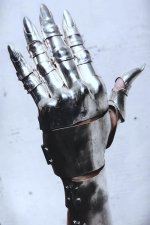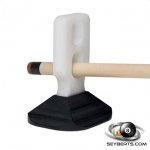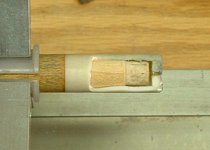jsp linked this post by jal from 2007 and is well written and what I was trying to say.
"...Another way of looking at it is that, given the same stick speed, less impulse develops when the cueball is struck off-center than when struck at center. To generate the same impulse, which was Jsp's premise, the cue has to be traveling faster and therefore has more kinetic energy. That's where the additional energy of the cueball comes from.
But why is there less impulse for an off-center hit given the same stick speed?
Impulse (force X time) equals a change in linear momentum (mass X velocity). Newton's third law tells us that during the collision, the impuse acting on the stick is exactly the same as that acting on the ball (same in magnitude but opposite in direction). Compared to a billiard ball, if you strike a ping-pong ball with your cue, the cue's momentum hardly changes. Therefore the impulse which acted on both the stick and the ping-pong ball must be much less. But if you strike a bowling ball, the stick jumps back and undergoes a much larger change in momentum. The impulse on the stick and the bowling ball must therefore be much larger.
When you strike the cueball off-center, it can rotate as well as move forward, ie, it can "get out of the way" easier. In effect, it presents less mass (inertia) to the stick. For the same stick speed then, as per above, less impulse develops...."
Kudos jal.
"...Another way of looking at it is that, given the same stick speed, less impulse develops when the cueball is struck off-center than when struck at center. To generate the same impulse, which was Jsp's premise, the cue has to be traveling faster and therefore has more kinetic energy. That's where the additional energy of the cueball comes from.
But why is there less impulse for an off-center hit given the same stick speed?
Impulse (force X time) equals a change in linear momentum (mass X velocity). Newton's third law tells us that during the collision, the impuse acting on the stick is exactly the same as that acting on the ball (same in magnitude but opposite in direction). Compared to a billiard ball, if you strike a ping-pong ball with your cue, the cue's momentum hardly changes. Therefore the impulse which acted on both the stick and the ping-pong ball must be much less. But if you strike a bowling ball, the stick jumps back and undergoes a much larger change in momentum. The impulse on the stick and the bowling ball must therefore be much larger.
When you strike the cueball off-center, it can rotate as well as move forward, ie, it can "get out of the way" easier. In effect, it presents less mass (inertia) to the stick. For the same stick speed then, as per above, less impulse develops...."
Kudos jal.



